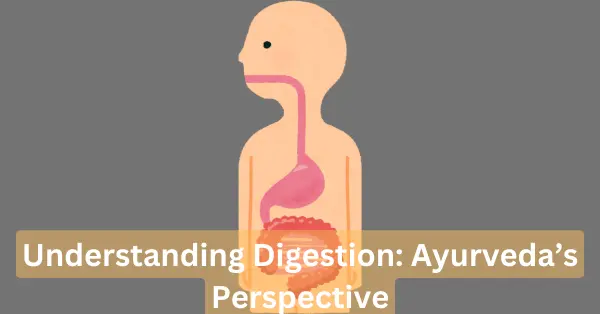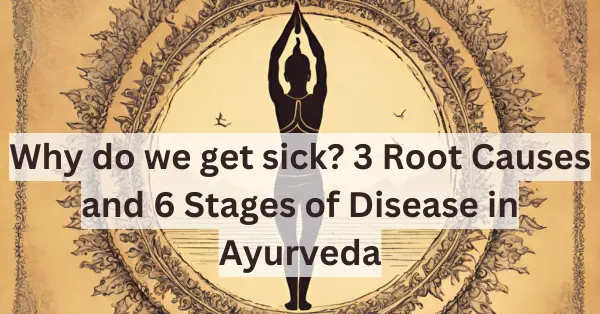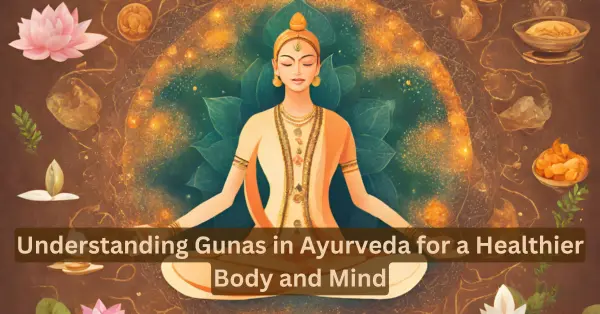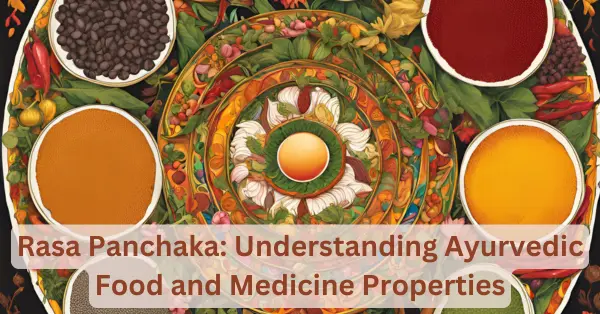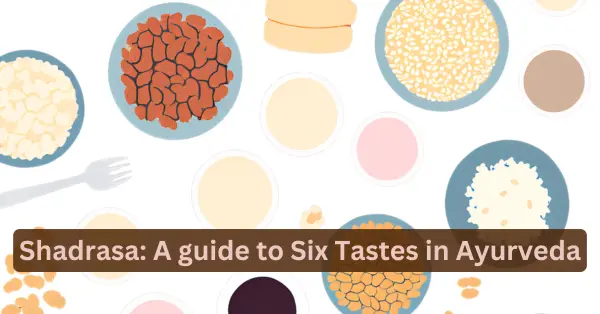In this blog, we will thoroughly understand Ayurveda’s perspective on the process of digestion.
As per Ayurveda, two digestive processes happen in the body.
1. Gross digestion
2. Subtle digestion
In Ayurveda, the process of digestion has been classified into three phases, i.e. Madhura avastha paka, amla avastha paka and katu avastha paka. These stages of avastha paka can be compared with contemporary modern physiology.[1]
1. Gross Digestion
It’s the process that we understand on a physical level. The typical duration of digestion through the gastrointestinal tract is about 4-6 hours, depending on the Agni or digestive fire and constitution of an individual.
Gross Digestion takes place in three places.
Stage 1. Mouth, upper stomach
Stage 2. Lower stomach and small intestine
Stage3. In the large intestine
Stage 1. In Mouth/Upper Stomach
- This stage takes 1-2 hours
- The food mixes with saliva, making it moist and easy to digest
- This stage is associated with the Kapha dosha or the earth and water elements.
- Disorder in this stage causes lethargy even after an hour of consuming food.
Stage 2. In Lower stomach and small intestine
- Takes 2-3 hours
- It is associated with the Pitta dosha or fire and water elements.
- In this second stage, pancreatic secretion breaks down food into smaller particles.
- In this stage, if the food is not digested properly, it leads to reflex acid and heartburn.
Stage 3. In large intestine
- During this stage, the nutrient fluid is removed from the waste product.
- The process takes around 1-2 hours.
- Vata dosha is associated with this stage, ie air and ether elements, responsible for removing Ahara rasa from the waste product.
- Bloating and gas indicate problems with the third stage of digestion.
2. Subtle Digestion (At tissue level)
The subtle digestion starts when the gross digestion is over. Subtle digestion is the process of nourishing each tissue layer one by one.
Once the waste product or malas are excreted from the body, nutrient fluid or Ahara rasa is left behind.
This Ahara rasa is then carried to each tissue layer, which is called the Seven Dhatus/tissues in Ayurveda.
In subtle digestion, seven tissues are nourished in the order they are formed.
Order of Nourishment of Seven Dhatus
1. Rasa Dhatu (Plasma)→2. Rakta Dhatu (Blood)→3. Mamsa Dhatu (Muscles)→4. Meda Dhatu (Fat)→5. Asthi Dhatu (Bones)→6. Majja Dhatu (Bone Marrow)→7. Shukra Dhatu (Reproductive Tissue)
Understand Subtle Digestion with an Example
The flow of nutrients from one layer to another can be compared to the process of irrigation.
A channel full of water nourishes each row of the crop; the nearest portion receives water first, and the portion at the end gets it last. Once one row is full, the remaining water flows to the next row.
Similarly, each tissue is nourished before passing to the next. However, if a tissue layer is depleted and needs more nutrients, the normal process is bypassed, and the tissue layer with the greatest need will be nourished first.
Mind Digestion Connection
Your thoughts have a direct connection with your digestion. Stress, Anxiety, and emotional imbalance weaken the digestive fire. Mental peace and digestive harmony are directly proportional. Pranayama and Meditation are best to calm the stressed mind.
Sleep and Digestion
A study was conducted on 186 young women aged 20-30 years. Notably, Vishamagni, characterised by irregular digestive fire, was prominently observed in individuals with disturbed sleep.[2]
Ayurveda Ginger Tea recipe for digestion
Allergy Precaution
All the food items described in the recipes across this course are natural. But, if you are allergic to any items like lemon, milk, peanuts, ginger, etc. Please consult your physician before consuming any of them.
Ingredients
- 1 Teaspoon freshly grated ginger. Ginger stimulates the secretion of saliva and digestive enzymes that aid digestion.
- 2 teaspoons fennel seeds. Fennel reduces digestive cramping, gas, and bloating.
- 1 teaspoon lemon juice. Rich in Vitamin C, lemon also stimulates digestion.
- 500 mlof water
How to prepare Ayurveda Ginger tea for Digestion
- Crush the fennel seeds and grate the ginger
- Boil 500 ml of water in a pan, add fennel, ginger, and lemon
- Boil and simmer for ten minutes
- Sieve using a tea strainer and serve as is, or add half a teaspoon of raw (not cooked) honey before serving.
This tea can be stored well in a thermos jug and can be sipped after every meal for proper digestion and increasing digestive fire.
Conclusion
After understanding the Gross digestion and subtle digestion of Ayurveda, a person has a better understanding of their body.
Gastrointestinal disorders, including dyspepsia and functional indigestion, are increasingly prevalent in modern society due to irregular eating habits, stress, and sedentary lifestyles. Ayurveda emphasises the importance of maintaining a balanced Agni to ensure proper digestion and overall well-being.[3]
Frequently Asked Questions: Digestion in Ayurveda
The short answer, according to Ayurveda, is Yes. The blood goes to the stomach for digestion. Blood also goes to the genitals during sex.
Now, imagine having sex or excessive masturbation right after you eat a heavy meal. The blood will go to the genitals, and a lack of blood in the stomach will lead to indigestion.
Masturbation or sex doesn’t make you weak. It is the excessive masturbation or sex that breaks your back.
As per Ayurveda, the human body has 7 tissue layers or Dhatus. Normally, the nourishment of these Dhatus takes place in an order.
1. Rasa Dhatu (Plasma)→2. Rakta Dhatu (Blood)→3. Mamsa Dhatu (Muscles)→4. Meda Dhatu (Fat)→5. Asthi Dhatu (Bones)→6. Majja Dhatu (Bone Marrow)→7. Shukra Dhatu (Reproductive Tissue)
Also, if a tissue layer/Dhatu is depleted and needs more nutrients, the normal process is bypassed, and the tissue layer with the greatest need will be nourished first. Additionally, the priority of the human body is to make healthy reproductive tissue for reproduction, no matter what. It is because the human species depends on it.
Now, if a person depletes the reproductive tissue or shukra Dhatu by excessive masturbation. The body will quickly try to replenish the last Dhatus as it is in the greatest need of nourishment.
The body will not prioritise the nourishment of the six other Dhatus, which are necessary for the body’s proper growth. If this trauma goes on for years, the person will have a weak body.
Reference
[1] Sharma R, Sharma RK, Sharma DC, Shandilya A. Physiology of Digestive System According to Ayurveda. Int J Creat Res Thoughts [Internet]. 2023 Jul;11(7):c193–c197. Available from: Link to Study. <Go to Citation>
[2] Lande SP, Tawalare K, Mishra SA. Exploring the Connection between Sleep Quality and Digestive Function in Young Women: Insights from Ayurveda’s Perspective on Agni – A Comprehensive Study. IJAM [Internet]. 2025 Apr. 9 [cited 2025 Jul. 7];16(1):31-6. Available from: Link to Study. <Go to Citation>
[3] Patil S. Ajirna: An Ayurvedic perspective on Indigestion. J Ayurveda Integr Med Sci [Internet]. 2025 [cited 2025 Jul 7];10(3):123-130. Available from: Link to Study. <Go to Citation>

